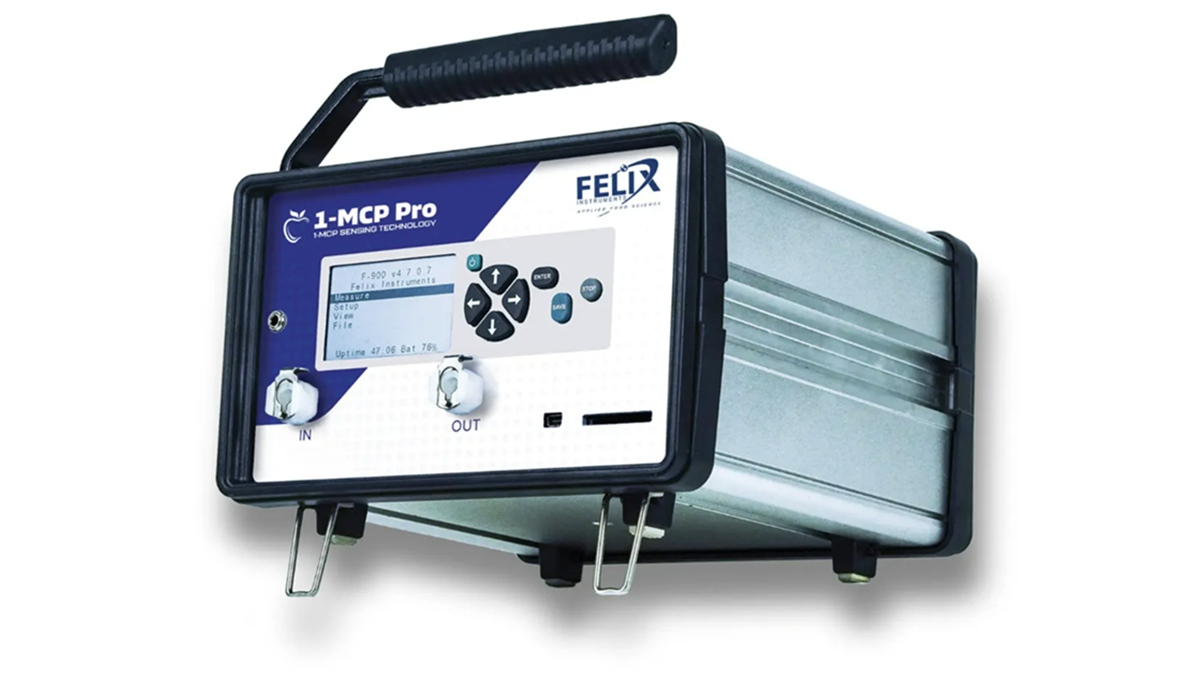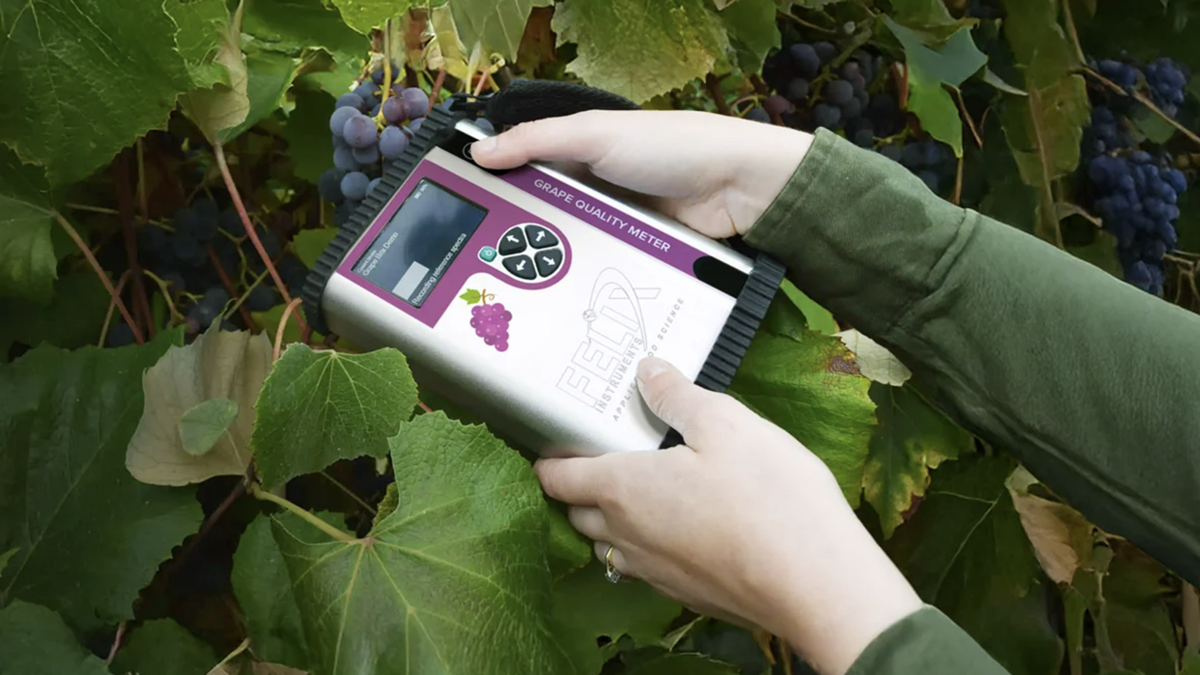Measurements
Preserving freshness in the fresh-cut produce and leafy green industries
In today?s world, food waste and the preservation of fresh produce have become increasingly important. The conversation between Eric, the Director of QFresh Lab, and Galen, the Director of Applied Science at Felix Instruments, delves into the challenges and innovations in the fresh-cut produce and leafy green industries. They discuss the impact of microbial growth on produce, the importance of quality for the end consumer, and the focus on preservation to reduce food waste. Join the conversation as they share their expert insights and knowledge on the subject, and explore the latest techniques and technologies that are changing the game for the fresh produce industry. This conversation is a must-read for anyone in the food science, agriculture, and packaging sectors and those passionate about reducing food waste and preserving fresh produce. Galen: Good morning, Eric. Thank you for taking the time to talk with me today. My name is Galen. I?m the Director of Applied Science at Felix Instruments, and my background is mainly in quality and safety testing in the food, agriculture, produce, and cannabis sectors. And at Felix Instruments, I am involved with a lot of the R and D of the instruments, as well as actual deployment of these instruments out in the field and figuring out what kind of applications our instruments are useful for. We?re excited to have you on today to discuss your experience using our instruments. So if you can introduce us to who you are, your company, and what you do, we?ll see where the conversation takes us. Eric: Sure. My name is Eric Vandercook. I am the director of the QFresh lab. The QFresh lab was formed about five years ago.
28 February, 2023
In todays world, food waste and the preservation of fresh produce have become increasingly important. The conversation between Eric, the Director of QFresh Lab, and Galen, the Director of Applied Science at Felix Instruments, delves into the challenges and innovations in the fresh-cut produce and leafy green industries. They discuss the impact of microbial growth on produce, the importance of quality for the end consumer, and the focus on preservation to reduce food waste. Join the conversation as they share their expert insights and knowledge on the subject, and explore the latest techniques and technologies that are changing the game for the fresh produce industry. This conversation is a must-read for anyone in the food science, agriculture, and packaging sectors and those passionate about reducing food waste and preserving fresh produce.Galen:Good morning, Eric. Thank you for taking the time to talk with me today. My name is Galen. Im the Director of Applied Science at Felix Instruments, and my background is mainly in quality and safety testing in the food, agriculture, produce, and cannabis sectors. And at Felix Instruments, I am involved with a lot of the R and D of the instruments, as well as actual deployment of these instruments out in the field and figuring out what kind of applications our instruments are useful for. Were excited to have you on today to discuss your experience using our instruments. So if you can introduce us to who you are, your company, and what you do, well see where the conversation takes us. Eric:Sure. My name is Eric Vandercook. I am the director of the QFresh lab. The QFresh lab was formed about five years ago. We saw a gap in the industry, a knowledge gap. And my business partner has been consulting in the fresh produce space for 20-25 years, primarily around package design, perforations, and how you design a package around fresh produce. But what needed to be added was a physical lab space to do the testing. So if youre a company looking to start a new product, switch packaging, or try a new packaging format, we have the space to bring in your greens, package in various forms, and do shelf-life testing. And the Felix O2-CO2 Instrument is vital for us because in fresh produce, the product is still alive, and the product is still breathing. So, understanding how it breathes, its respiration rate, and the residual O2 in the package tells me everything I need to know about how long that leafy green can and will last in that package. And it also helps on the back end to redesign that package if we get it wrong in the front end, if the perforations are wrong, or the sizing is wrong, or the respiration rate is a lot higher or lower, all those types of things. Our lab here has been dedicated primarily to fresh produce, but we also work in other spaces. Weve been doing seaweed studies; weve been doing fresh fish studies. The State of New York is looking at exciting things around low O2 packaging and the potential for seabot growth. Weve done some of that testing as well. So thats what Qfresh does, and then, on top of that, we do packaging work. So we have various packaging machines to pack either gas-flushed bags, gas-flushed clam shells, or nongas flushed. On top of that, we have equipment in the lab for measuring perforation, sizing airflow, and the OTR of the package itself. So thats what Qfresh does in a nutshell. My background is in biochemistry and food science. I got my Ph.D. in the real world, working for a salad company that didnt understand the basic science behind greens. And so I spent years doing exactly that, understanding the basic science behind commercially processed greens and what actually in a commercial setting can extend shelf-life versus the literature telling me what can extend shelf-life. Galen:Right, theres a lot of conversation in the food science community. Over the last few years, the discussion has focused on our global food supply chain and how we can reduce food waste. And it sounds a lot like what youre doing. Youre the one-stop shop for figuring out how to keep our produce from going bad so that we can waste less of our food. So Id like to know what innovations youre seeing in your packaging sector that are changing the game for how were storing our produce and the longevity of our produce. Eric: Yeah, you hit the nail on the head there. Thats the reason that QFresh Lab was started. We saw a gap in the industry where plenty of great food scientists work for companies that can extend the shelf-life for that specific company. But there wasnt anyone who was a one-stop shop that had the knowledge and base understanding to look at the whole sector holistically by the company and what works and what wont work for them. So when you talk about innovation, its interesting because Ive tested, you name it, and Ive tested it. Whether its CO2 pads or something unique, we can get more moisture out with this type of valve. It could be a one-way valve that looks at off-gassing CO2. Im not going to call most of it snake oil, but it just doesnt quite get you to where you want to be in the industry. It comes back to the basics. It comes back to understanding your specific product and how you interact with it. So, for example, if youre cutting carrots or bringing in fresh produce from the field. Or youve hydroponics, you know, indoor type of growing, and how do you extend the shelf life of something like that? That industry is exciting because they have perfect control over their product from start to finish, yet they have the most quality issues. Whats driving that? So it goes back to the basics. The basics of understanding your specific product, your geometries, how you process it, what kind of damage you are adding, what sort of temperatures you are changing, and then what type of package you are putting it in ultimately. If youre looking at the residual oxygen side of the package, do you need a gas flush or not? Do you need to go really low in O2 or not? Do you need to worry about ethylene? Those are the basics of produce that most people in the industry generally understand, but they dont truly understand what the drivers are and what kind of levers you can pull. The types of innovations that we see, especially in the last couple of years, are that most people are moving to a kind of seal-reseal application on leafy greens. Theyre moving away from open-air tubs, away from bags, and a little bit towards more lighting film where they can precisely control that atmosphere. And then on top of that, when a consumer takes it home, opens it, uses one-third of it, and if they seal it back up, it takes a couple of days to bring O2 and CO2 back to that kind of happy medium; and you extend the greens that way. So the major innovation were seeing is around packaging and people just understanding more in-depth how important the packaging is. Then your big innovations are on the other side where youre looking at external sachets, packets, or something else that can extend the shelf-life. That work in certain realms. You know, that works in strawberries, that works in berries. But for the most part, for most fresh produce, its the basics. Its getting them cold and understanding the package interactions with that product and the residual O2-CO2 levels you reach inside that package. Galen:Yeah. It brings up another interesting point about leafy greens. It has always been the biggest challenge in shelf-life, right there. We have, for you know, a long time with the deciduous fruits, been able to extend shelf life for quite some time, just with ethylene mitigation strategies and improvements in cold storage. But what are your opinions? With fruit, its also been easy for people to be innovative in the coatings sector. Being able to coat the fruit in something and extending shelf-life through changes in respiration rates and ethylene. With leafy greens, thats not necessarily something I foresee, as the coatings are not applicable. But do you do much work? Like, whats the interplay between that kind of coating strategy and packaging? Are there people that are looking into how those affect each other? Or are you mostly looking at just untreated produce or, you know, just cut produce that solely relies on the packaging for all of the atmospheric control?CLICK HERE to read Eric´s answer and the full conversation



.jpg)







